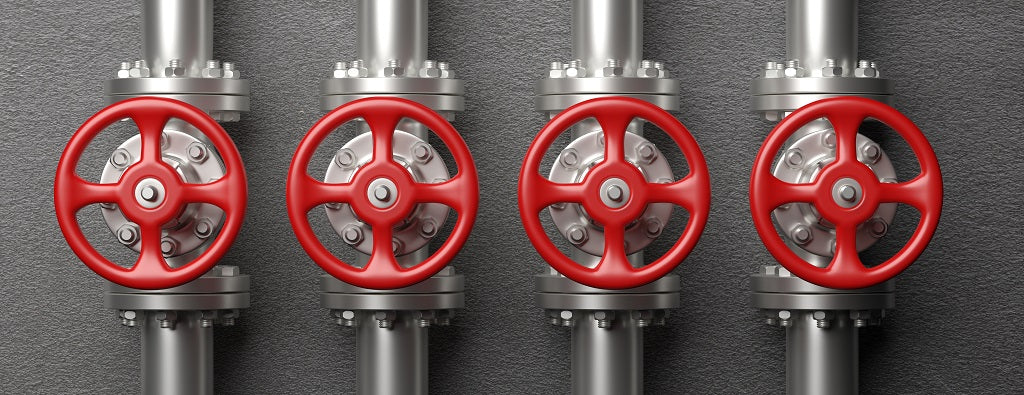Checking out the Functionality of Modern Control Valves in Industrial Applications
Checking out the Functionality of Modern Control Valves in Industrial Applications
Blog Article

Maximize Energy Financial Savings and Comfort With Advanced Structure Automation Controls
In the realm of modern-day architecture and center administration, the combination of advanced building automation controls stands as a crucial innovation. By using the power of automation, buildings can adapt, react, and develop in methods that were when unthinkable.
Power Efficiency Advantages
Energy efficiency benefits can dramatically lower energy usage and operational prices in buildings. Energy-efficient systems, such as sophisticated building automation controls, can optimize the usage of sources like heating, air conditioning, and illumination, leading to reduced energy costs over time.
Additionally, boosted energy efficiency can prolong the life-span of building tools and systems. By operating extra effectively, HVAC systems, lighting fixture, and other structure components experience less damage, causing lowered maintenance and substitute costs. Furthermore, energy-efficient buildings often regulate higher property worths and rental prices, offering long-term financial benefits to owners.
Additionally, power efficiency can boost resident comfort and performance. Effectively regulated indoor atmospheres with optimum illumination and thermal problems create a more pleasant and favorable work area, leading to improved employee complete satisfaction and performance. On the whole, the power effectiveness benefits related to innovative building automation controls are multifaceted, incorporating price savings, ecological stewardship, and owner wellness.
Improved Convenience Control
Enhancing convenience control in building settings requires an innovative combination of advanced automation systems for optimum resident health. By making use of innovative structure automation controls, facilities can customize the interior atmosphere to satisfy the particular demands and choices of passengers. control valves.
Improved convenience control surpasses fundamental temperature changes. It includes features such as customized settings, occupancy sensing units, and all-natural light application to develop a dynamic and receptive setting. By including these innovative controls, structures can not just improve comfort yet likewise enhance energy effectiveness by maximizing system procedures based on real occupancy and use patterns. Inevitably, prioritizing resident convenience via innovative automation systems causes an extra satisfying and much healthier indoor setting.
Operational Efficiency Improvements

In addition, the execution of real-time surveillance and analytics devices makes it possible for structure operators to determine power inadequacies and operational anomalies quickly. By continually keeping track of energy usage patterns and system performance metrics, modifications can be made in real-time to enhance energy intake and make go to these guys sure peak operational effectiveness. control valves. Additionally, including need feedback methods right into building automation controls can additionally boost functional efficiency by dynamically changing energy usage based upon grid conditions and rates signals
Indoor Environment Optimization
Efficient interior climate optimization is a basic element of structure automation controls, making sure residents' convenience and well-being while optimizing energy financial savings. By using advanced sensing units and controls, constructing automation systems can continuously readjust and check temperature level, moisture levels, air quality, and ventilation to produce an optimal indoor environment. Maintaining constant and comfortable problems not just enhances resident satisfaction yet additionally improves efficiency and overall health.
Interior climate optimization additionally plays a crucial function in energy effectiveness. By fine-tuning air flow, cooling, and heating systems based upon real-time data and tenancy patterns, developing automation controls can considerably decrease power intake - control valves. For instance, carrying out methods such as demand-controlled air flow and thermal zoning can aid reduce power waste while ensuring that each location of the building gets the essential conditioning.

Sustainable Atmosphere Production
Building automation regulates not only enhance indoor environment problems for energy effectiveness and occupant comfort but also lay the structure for developing a lasting environment through strategic administration of systems and resources. By integrating innovative building automation technologies, such as sensors, actuators, and smart software application, centers can check and adjust power use in real-time to minimize waste and decrease their carbon footprint. These systems enable anticipating maintenance, determining possible problems prior to they rise and optimizing tools performance to improve durability and performance.
Moreover, sustainable environment creation extends past energy administration to include water preservation, waste decrease, and indoor air high quality renovation. Building automation controls can control water usage, spot leaks, and make certain proper garbage disposal practices, contributing to overall sustainability efforts. Furthermore, by controlling and keeping track of air flow and filtering systems, these innovations improve owner health and wellness and productivity while lowering energy intake connected with cooling and heating operations.
Conclusion
To conclude, advanced building automation regulates deal substantial advantages in regards to power cost savings, comfort control, functional efficiency, interior climate optimization, and producing a sustainable setting. By executing these controls, buildings can achieve optimal efficiency while reducing power intake and improving passenger comfort. It is apparent that making use of innovative automation modern technology is crucial in improving structure performance and developing a more lasting future.
Power effectiveness advantages can considerably lower energy usage and functional expenses in buildings. In general, the energy effectiveness advantages linked with sophisticated structure automation controls are complex, including price financial savings, ecological stewardship, and occupant well-being.
In addition, incorporating need feedback strategies into structure automation controls can better enhance look at these guys operational effectiveness by dynamically changing power use based on grid problems and pricing signals.
Building automation manages not only enhance indoor environment conditions for power efficiency and resident comfort however also lay the foundation for creating a sustainable environment via tactical monitoring of systems and resources.In conclusion, advanced building automation controls offer substantial benefits in terms of power financial savings, convenience control, functional effectiveness, interior climate optimization, and producing a sustainable setting.
Report this page